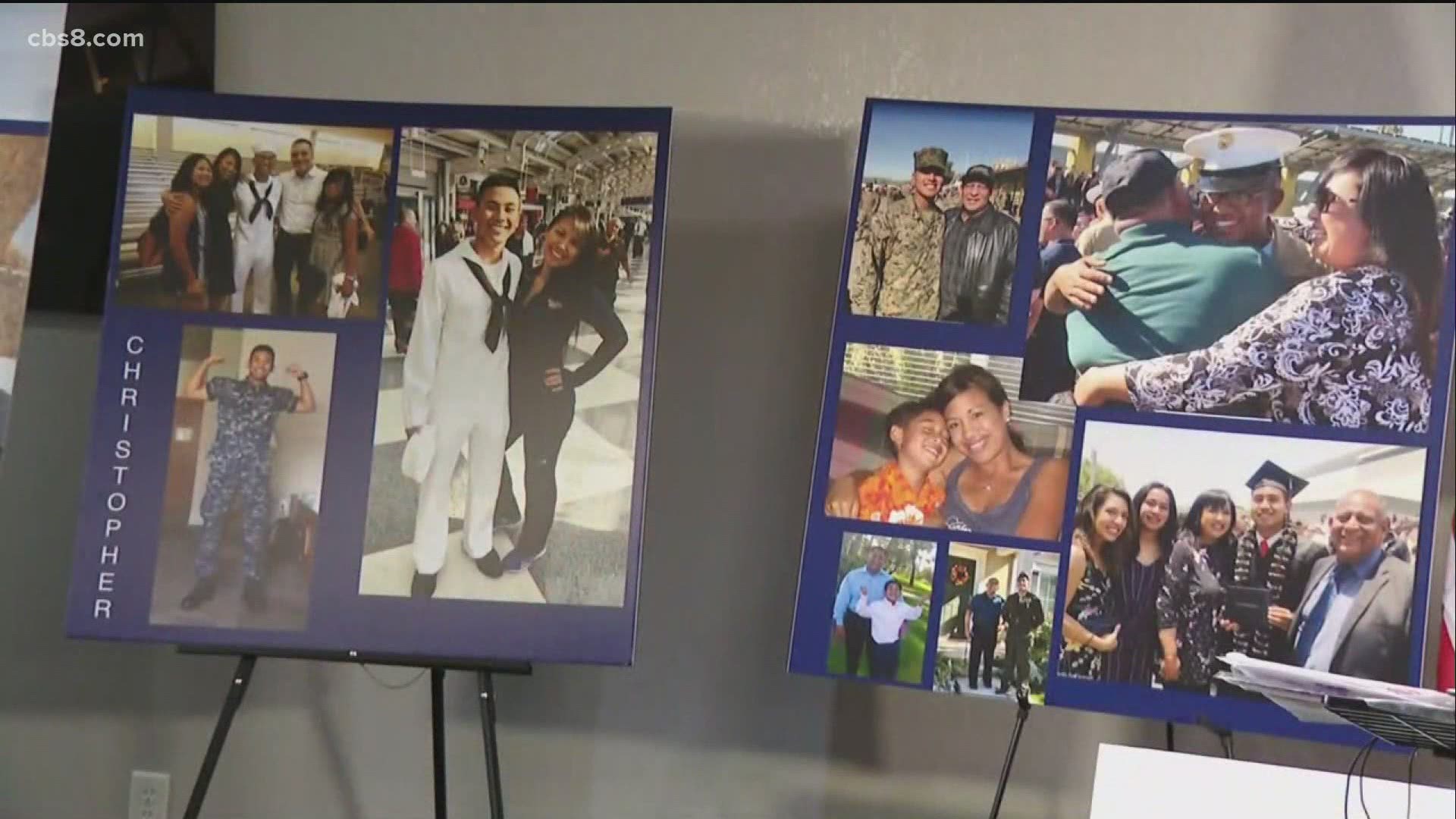LOS ANGELES — Relatives of eight Marines and a sailor who drowned in a training accident off the coast of San Clemente Island in 2020 Thursday sued the manufacturer and designer of the amphibious assault vehicle in which they were conducting training.
In late July, family members of the fallen servicemen came together to demand answers and to announce that they were planning to file a lawsuit against the vehicle manufacturer.
The Los Angeles Superior Court lawsuit names as defendants BAE Systems Inc., which also supplies the AAV's component parts, according to the complaint.
BAE Systems does business in Los Angeles County and is a U.S. subsidiary of British defense, security and aerospace company BAE Systems PLC. The suit alleges wrongful death, negligence and strict liability. The plaintiffs seek unspecified compensatory and punitive damages.
A BAE Systems spokeswoman issued a statement Thursday regarding the lawsuit.
"We offer our deepest sympathies to the families impacted by this tragedy and we mourn the loss of the nine service members," the statement said. "We are not in a position to comment on ongoing litigation."
The statement further said that the Marine Corps has conducted an investigation into the incident and referred all questions related to it to that service branch.
Killed in the July 30, 2020, accident were Pfc. Bryan J. Baltierra, 18, of Corona; Lance Cpl. Marco A. Barranco, 21, of Montebello; Cpl. Cesar A. Villanueva, 21, of Riverside; Navy Hospitalman Christopher Gnem, 22, of Stockton; Pfc. Evan A. Bath, 19, of Wisconsin; Pfc. Jack Ryan Ostrovsky, 21, and Lance Cpl. Chase D. Sweetwood, 19, both of Oregon; and Cpl. Wesley A. Rodd, 23, of Texas.
The AAV experienced "multiple serious and catastrophic mechanical, design and manufacturing failures," causing the vessel to lose transmission fluid and forward propulsion and become "dead in the water," flooding the AAV from multiple points, the suit states.
The AAV that had departed the USS Somerset sank to the ocean bottom, trapping the servicemen inside, according to the suit.
An investigation into the sinking of the vessel determined that the AAV became disabled in the water due to leaking transmission fluid and that the vessel was flooding with water at multiple locations due to degraded and ineffective seals, holes and the failure of the engine plenum doors to close and seal properly, the suit alleges.
"The servicemen were trapped inside the dark vehicle, unable to see due to the non-functioning emergency egress lighting system which left the cargo hold so dark they could not see the cargo hatch lock," the suit states.
The allegedly defective design of the cargo hatch door makes opening it so hard that occupants sometimes have to hit the handle with a hammer to get the door to open, the suit states.
The plaintiffs believe that BAE Systems knew beforehand that the AAV was defectively designed, manufactured and maintained, and that no one could escape alive in a sinking because of the defects in the cargo hatch doors, according to the suit.
BAE Systems failed in its duties to the government, including the Navy and Marine Corps, to ensure that the equipment that they design and manufacture is seaworthy, the suit alleges.
WATCH: Families of service members who died in AAV accident announce lawsuit against the vessel manufacturer (July 2021)

